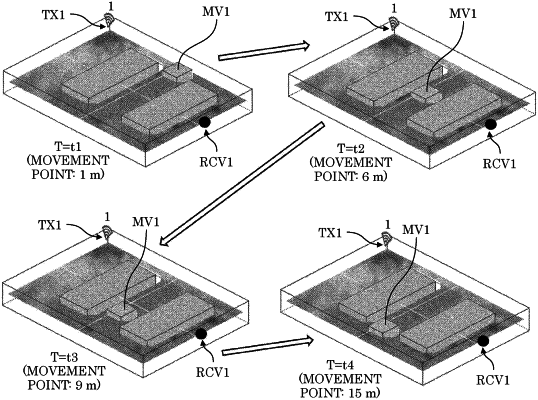| CPC H04W 24/06 (2013.01) [H04B 17/318 (2015.01); H04W 4/029 (2018.02)] | 7 Claims |

|
1. A radio wave environment analyzer comprising:
a memory that holds location information on a radio transmitter disposed in a target area where at least one moving body is present and location information on a reference point at which a radio wave from the radio transmitter is received; and
a processor that obtains (i) a first reception intensity of the radio wave at the reference point when the at least one moving body is present at an initial location, and (ii) a plurality of second reception intensities of the radio wave at the reference point respectively corresponding to cases where the at least one moving body is present at a plurality of movement locations, the at least one moving body moving a plurality of times by a given distance from the initial location to travel to the plurality of movement locations,
wherein the processor selects one or more locations out of the plurality of movement locations to execute a simulation of a radio wave environment in the target area, based on the first reception intensity and the plurality of second reception intensities,
the at least one moving body is one first moving body, and
the processor selects the one or more locations of the one first moving body to execute the simulation, in accordance with comparison of a reception intensity difference with a threshold, the reception intensity difference being a difference between a pre-movement reception intensity of the radio wave at the reference point when the one first moving body is present at a location right before movement of the one first moving body and a post-movement reception intensity of the radio wave at the reference point when the one first moving body is present at a location right after movement of the first moving body, the pre-movement reception intensity being the first reception intensity or one of the plurality of second reception intensities, the post-movement reception intensity being one of the plurality of second reception intensities.
|